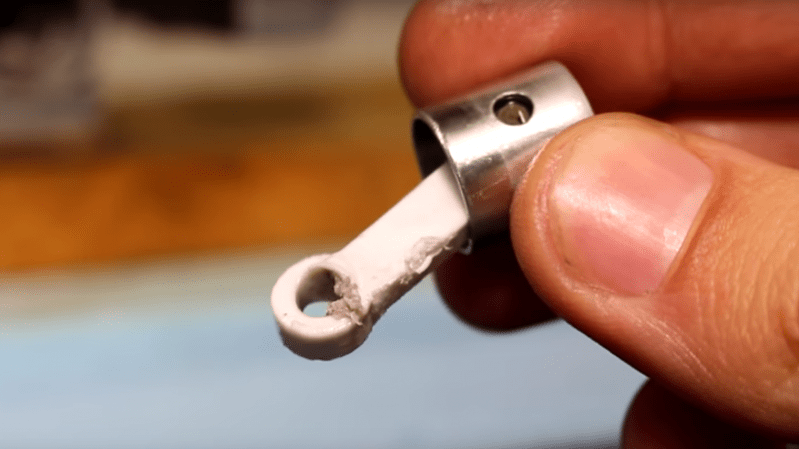Additive manufacturing has come a long way in a short time, and the parts you can turn out with some high-end 3D-printers rival machined metal in terms of durability. But consumer-grade technology generally lags the good stuff, so there’s no way you can 3D-print internal combustion engine parts on a run of the mill printer yet, right?
As it turns out, you can at least 3D-print connecting rods, if both the engine and your expectations are scaled appropriately. [JohnnyQ90] loves his miniature nitro engines, which we’ve seen him use to power both a rotary tool and a hand drill before. So taking apart a perfectly good engine and replacing the aluminum connecting rod with a PETG print was a little surprising. The design process was dead easy with such a simple part, and the print seemed like a reasonable facsimile of the original when laid side-by-side. But there were obvious differences, like the press-fit bronze bearings and oil ports in the crank and wrist ends of the original part, not to mention the even thickness along the plastic part instead of the relief along the shaft in the prototype.
Nonetheless, the rod was fitted into an engine with a clear plastic cover that lets us observe the spinning bits right up to the inevitable moment of failure, which you can see in the video below. To us it looks like failing to neck down the shaft of the rod was probably not a great idea, but the main failure mode was the bearings, or lack thereof. Still, we were surprised how long the part lasted, and we can’t help but wonder how a composite connecting rod would perform.
Still in the mood to see how plastic performs in two-stroke engines? Break out the JB Weld.















Over the weekend I printed a barrel nut wrench for an Ar15. The part was uploaded to thingiverse and was described as fitting an airsoft replica of an ar15. I’ve never seen an airsoft gun, but i’m pretty impressed with the replicas as the part exactly fit my actual ar15. To my surprise I was able to use the 3d printed part to get the barrel nut off! I doubt you could put enough force behind it to put the nut back on, but luckily I was replacing the nut with an aftermarket version, so that wasn’t a concern. Totally changed my mind on the usefulness of 3d prints.
Many airsoft guns are really close, and some are mil-spec, so many parts should fit
The failure modes are many. Plastic creeps, swells up and softens or cracks or dissolves in the lubricant and fuel, or just simply melts from the friction and internal heating from the hysteresis losses under a cycling load.
Not to mention the much larger thermal expansion of plastic. Not good for things designed to get hot & maintain tight tolerances.
Depends on the plastics used, people seem to forget that plastic lasts longer than metal in many applications, even in gearing
I’d like to see this tried using the bushings from the metal rod.
The high-end 3d printed parts rival machines parts? Woof citation needed. I’d love to see that. I mean maybe if you include the fancy metal sintering ones, then fair enough.
My crummy peanut gallery nitpick aside, I love that somebody has the gall to put a fff part in an actual engine. Always wanted to see that!
I’d settle for someone adding a sheet of [perforated] foil every third layer.
Perforations let the plastic layers melt and fuse, while the steel / aluminum sheet adds strength & rigidity.
Why would you NOT include the metal sintered parts?
They would’ve lasted longer had he put the bushings in that the original metal part also had. Even metal connecting rods need bushings/bearings.
Also: While the plastic probably won’t last long, the plastic makes a great casting mold. I’d like to see him re-cast the connecting rod in aluminum from melted cans.
The recent article about adding reinforcing fiber to 3d prints might make similar prints more durable. Well, mechanically anyway. Heat resistance is probably still a ways off.